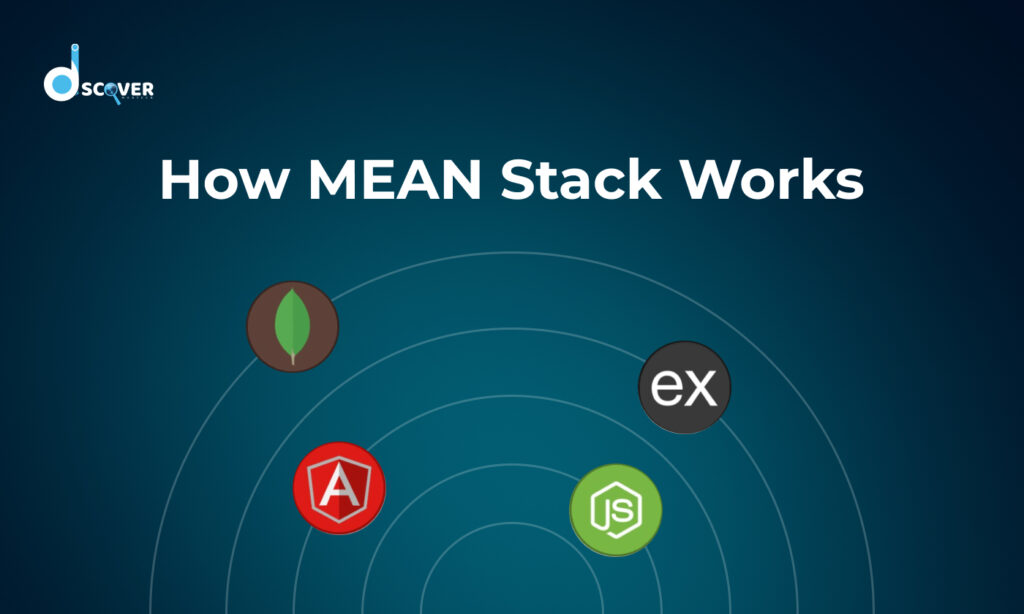
In the ever-evolving landscape of web development, the MEAN stack has emerged as a powerful and popular choice for building dynamic and robust web applications. Comprising MongoDB, Express.js, Angular, and Node.js, this full-stack development framework leverages JavaScript across both client and server sides, streamlining the development process. In this article, we’ll delve into each component of the MEAN stack, exploring their roles, interactions, and how they collectively facilitate the creation of modern web applications.
The MEAN Stack Components
The acronym MEAN represents four key technologies:
- MongoDB: A NoSQL database that stores data in flexible, JSON-like documents.
- Express.js: A lightweight web application framework for Node.js that simplifies server-side development.
- Angular: A client-side framework developed by Google for building dynamic single-page applications (SPAs).
- Node.js: A JavaScript runtime that enables server-side execution of JavaScript code.
By utilizing JavaScript throughout the entire stack, developers can maintain a consistent language across both the front-end and back-end, enhancing efficiency and coherence in full-stack web development.
MongoDB: The NoSQL Database
MongoDB serves as the database component in the MEAN stack. Unlike traditional relational databases, MongoDB is a NoSQL database that stores data in flexible, JSON-like documents. This schema-less nature allows for easy scalability and adaptability to changing data requirements. Developers can store complex data structures hierarchically, which aligns well with the object-oriented nature of JavaScript.
Key Features of MongoDB:
- Scalability: Designed to handle large volumes of data and traffic through horizontal scaling.
- Flexibility: Schema-less design accommodates evolving data models without requiring extensive migrations.
- Performance: Optimized for high-performance data retrieval and storage, making it suitable for real-time applications.
By using MongoDB, developers can seamlessly integrate the database with JavaScript-based applications, facilitating efficient data manipulation and retrieval.
Express.js: The Web Application Framework
Express.js is a minimal and flexible Node.js web application framework that provides a robust set of features for building web and mobile applications. It simplifies the process of creating server-side logic, handling HTTP requests and responses, and managing routing.
Key Features of Express.js:
- Middleware Support: Allows for the use of middleware functions to handle tasks such as authentication, logging, and error handling.
- Routing: Provides a straightforward mechanism to define routes and their corresponding handlers.
- Integration: Seamlessly integrates with various template engines and databases, including MongoDB.
By leveraging Express.js, developers can create robust APIs and server-side applications with minimal effort, streamlining the development process.
Angular: The Client-Side Framework
Angular, developed by Google, is a comprehensive front-end framework for building dynamic single-page applications (SPAs). It enables developers to create rich, interactive user interfaces with a modular architecture.
Key Features of Angular:
- Two-Way Data Binding: Synchronizes data between the model and the view, ensuring real-time updates.
- Component-Based Architecture: Encourages the development of reusable and maintainable components.
- Dependency Injection: Manages the dependencies of various components, enhancing modularity and testability.
Angular’s robust features facilitate the development of complex client-side applications, providing users with a seamless and responsive experience.
Node.js: The JavaScript Runtime
Node.js is an open-source, cross-platform JavaScript runtime environment that executes JavaScript code outside of a browser. It enables developers to use JavaScript for server-side scripting, unifying the development language across the stack.
Key Features of Node.js:
- Asynchronous and Event-Driven: Handles multiple connections concurrently without blocking, making it efficient for I/O operations.
- NPM (Node Package Manager): Provides access to a vast repository of open-source packages and modules, facilitating rapid development.
- Scalability: Designed to build scalable network applications capable of handling numerous simultaneous connections.
Node.js’s non-blocking architecture and extensive ecosystem make it a powerful choice for building fast and scalable server-side applications.
How MEAN Stack Components Work Together
The integration of MongoDB, Express.js, Angular, and Node.js creates a cohesive full-stack development environment. Here’s how these components interact:
- Client-Side Interaction (Angular): The user interacts with the application through the Angular-based front-end, which sends HTTP requests to the server.
- Server-Side Handling (Node.js & Express.js): Node.js receives the incoming requests and uses Express.js to route them appropriately. Express.js processes the requests, executes server-side logic, and interacts with the database as needed.
- Database Operations (MongoDB): If the request involves data retrieval or storage, Express.js communicates with MongoDB to perform the necessary operations. MongoDB returns the required data in JSON format.
- Response to Client (Angular): The server sends the processed data back to the Angular front-end, which updates the user interface dynamically based on the received information.
Advantages of Using the MEAN Stack
- Single Language Across the Stack: JavaScript is used for both front-end and back-end development, reducing complexity.
- Open-Source Software: All components of the MEAN stack are open-source, ensuring continuous updates and strong community support.
- Efficient Development Process: The integration of these technologies facilitates faster development and deployment.
- Scalability and Flexibility: MEAN stack applications can easily scale to accommodate growing user demands.
Final Thoughts
The MEAN stack is a powerful solution for full-stack development, providing an efficient and scalable approach to building web applications. By understanding how MongoDB, Express.js, Angular, and Node.js work together, developers can leverage their combined capabilities to create robust, high-performance applications. Whether you’re a beginner or an experienced developer, mastering the MEAN stack can significantly enhance your ability to develop modern, dynamic web applications.


